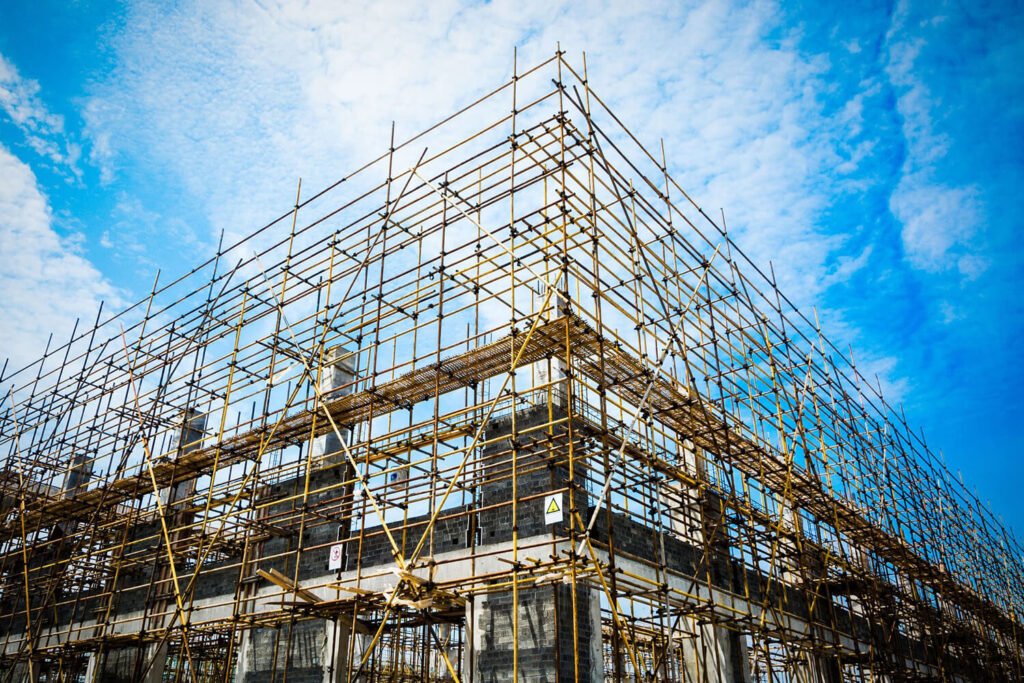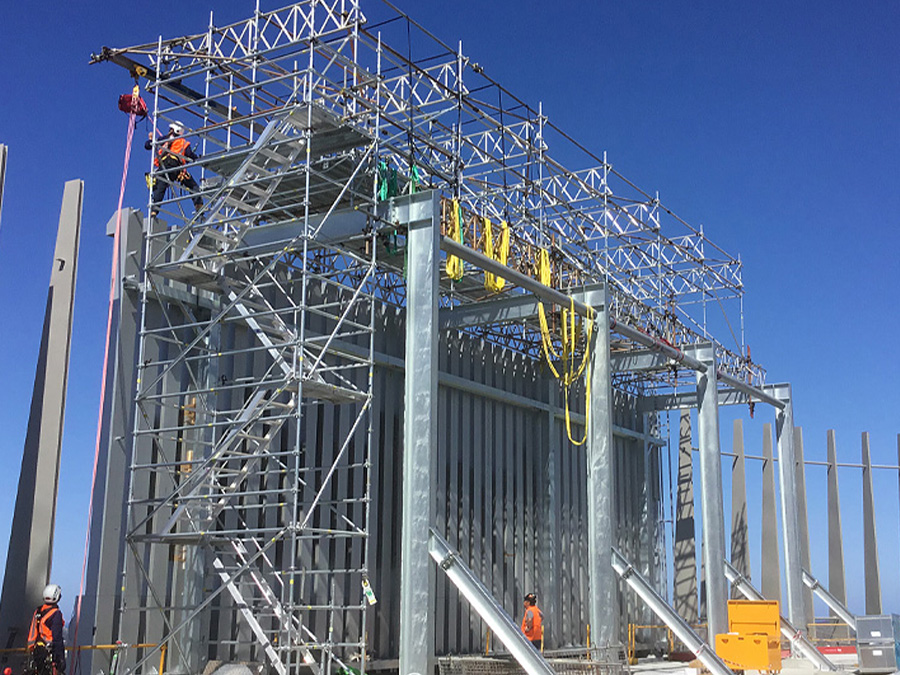Secure and Efficient Scaffolding in Surrey for Any Construction Task
Secure and Efficient Scaffolding in Surrey for Any Construction Task
Blog Article
A Comprehensive Overview to the Vital Functions of Scaffolding in Modern Building
The landscape of contemporary building increasingly relies upon efficient scaffolding systems that prioritize technology, security, and efficiency. As jobs expand in intricacy, comprehending the crucial features of scaffolding ends up being critical for guaranteeing worker safety and security and maximizing project timelines. This overview discovers various kinds of scaffolding, highlights vital safety and security functions, and checks out product developments that contribute to efficiency and sustainability. Nonetheless, the implications of these components prolong far beyond mere building and construction practices, prompting a better check out how they influence general job success and employee health.
Sorts Of Scaffolding
Although scaffolding systems can differ extensively in layout and application, they usually fall right into numerous distinctive groups that satisfy different building needs - Scaffolding. The most typical kinds consist of supported scaffolding, suspended scaffolding, and rolling scaffolding
Sustained scaffolding includes platforms sustained by a framework of poles, which provide a raised and stable working surface. This kind is usually utilized for jobs that need considerable altitude, such as bricklaying or external paint.
Suspended scaffolding, alternatively, is made use of for projects needing access to high altitudes, such as cleaning or repairing building facades. This system hangs from another framework or a rooftop, permitting workers to reduced or raise the system as required.
Rolling scaffolding attributes wheels that enable for simple movement across a work website. It is especially useful for jobs that require frequent moving, such as indoor operate in huge spaces.
Each sort of scaffolding is made with specific applications in mind, making certain that building tasks can be performed successfully and properly. Understanding these categories is vital for picking the appropriate scaffolding system to satisfy both project requirements and website problems.
Secret Safety Features
Safety and security is extremely important in scaffolding systems, as the prospective risks related to functioning at elevations can result in serious crashes if not correctly taken care of. Secret safety attributes are important to make sure the well-being of employees and the integrity of the building and construction site.
First and foremost, guardrails are critical. These barriers provide a physical guard against drops, considerably reducing the danger of serious injuries. In addition, toe boards are frequently made use of to avoid tools and products from diminishing the scaffold, safeguarding employees below.
One more crucial part is the use of non-slip surface areas on platforms. This function boosts grip, specifically in adverse climate condition, thus decreasing the possibility of drops and slips. In addition, gain access to ladders should be safely placed to facilitate safe entrance and leave from the scaffold.
Normal inspections and maintenance of scaffolding systems are likewise essential. These inspections guarantee that all elements remain in excellent problem and functioning correctly, dealing with any type of wear or damages immediately.
Last but not least, appropriate training for all employees associated with scaffolding operations is important to make sure that they recognize safety and security methods and can recognize potential hazards. Scaffolding. Collectively, these features create a safer working environment and considerably reduce dangers connected with scaffolding
Material Innovations
Developments in material scientific research have actually substantially affected the scaffolding market, enhancing both safety and performance in modern-day building and construction. The intro of high-strength steel and light weight aluminum alloys has revolutionized traditional scaffolding systems. These products are not only lighter, making them simpler to transfer and assemble, yet likewise provide superior load-bearing capacities. This leads to scaffolding structures that can sustain higher weights while reducing the threat of collapse.
In addition, ingenious composite products, such as fiberglass-reinforced plastics, have arised as practical choices. These materials are immune to corrosion and ecological degradation, therefore extending the life expectancy of scaffolding systems, specifically in severe weather. Using such materials adds to decrease maintenance expenses and ensures constant efficiency over time.


Style Factors To Consider
Thinking about the intricacies of contemporary building and construction jobs, effective scaffolding style is paramount to scaffold boards wickes making sure both capability and safety. Style considerations should encompass various variables, including tons ability, height, and the details requirements of the building and construction site. Each job offers unique difficulties, demanding a flexible technique to scaffolding systems that can adjust to varying conditions.
Architectural integrity is important; therefore, engineers need to determine the lots that the scaffolding will certainly support, including workers, products, and tools. The choice of materials plays a vital duty in ensuring the scaffolding can endure these tons while continuing to be resilient and lightweight. Furthermore, the layout has to permit easy access and egress, helping with the smooth motion of materials and workers.
Security functions, such as guardrails and non-slip surface areas, must be integrated to lessen threats of crashes. The format should consider the surrounding setting, including adjacent frameworks and potential risks. By addressing these layout factors to consider, building firms can improve the performance of scaffolding systems and promote a safer working atmosphere, inevitably adding to the overall success of the project.
Maintenance and Examinations
The performance of scaffolding systems prolongs beyond first style and application; ongoing upkeep and routine inspections are essential to guaranteeing their continued efficiency and security throughout the period of a job. Regular examinations ought to be conducted by certified personnel to recognize any indicators of wear, damage, or instability that can jeopardize the integrity of the scaffolding.
Upkeep protocols must include regular checks of structural elements, such as frames, slabs, and installations, guaranteeing that all components stay free and safe from deterioration or other degeneration. Additionally, the performance of safety and security features, such as guardrails and toe boards, need to be analyzed to make certain conformity with safety guidelines.
Documents of all inspections and maintenance tasks is important for liability and governing compliance. A systematic technique to record-keeping not just help in tracking the problem of the scaffolding but also offers needed proof in case of an event.
Eventually, developing a thorough upkeep and inspection schedule will considerably decrease the danger of mishaps and improve the general security of the building and construction website. By focusing on these techniques, building and construction managers can protect workers and support the project's integrity.

Final Thought
To conclude, the essential attributes of scaffolding in modern building and construction include a variety of essential aspects, including varied types, crucial safety devices, material technologies, and thoughtful style factors to consider. Highlighting safety and security with guardrails and non-slip surface areas, together with innovations in materials like high-strength steel, boosts both performance and sustainability. Routine upkeep and inspections are important for making sure architectural integrity and security on building sites, ultimately helping with reliable task implementation and promoting the well-being of workers.
The landscape of contemporary building and construction increasingly relies on efficient scaffolding systems that prioritize advancement, efficiency, and safety.Advancements in material science have significantly affected the scaffolding sector, boosting both safety and security and performance in read this article modern-day building and construction. Generally, these material innovations not just boost the efficiency and security of scaffolding systems however additionally align with the sector's press towards sustainability, as many modern products are made to be a lot more ecologically friendly.
Considering the intricacies of contemporary building projects, reliable scaffolding style is critical to guaranteeing both functionality and safety and security.In verdict, the vital features of scaffolding in modern-day building encompass an array of important aspects, consisting of varied types, crucial safety devices, material innovations, and thoughtful style considerations.
Report this page